Virtual Tour


B
This winch, powered by compressed air, was used for any heavy lifting back aft, such as lifting a launch aboard.
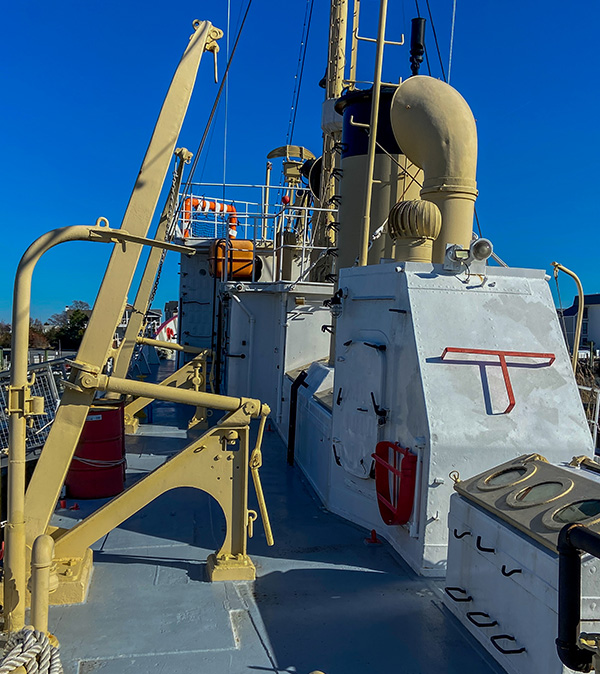
C
Port side looking forward.
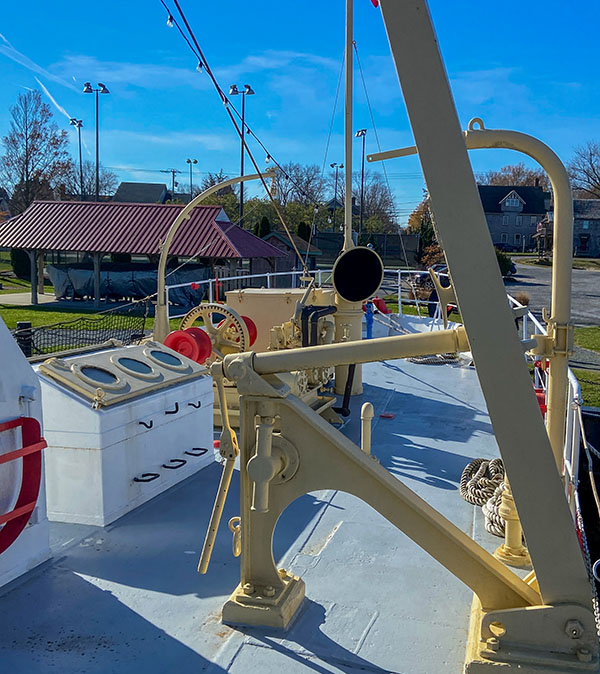
C
Port side looking aft.
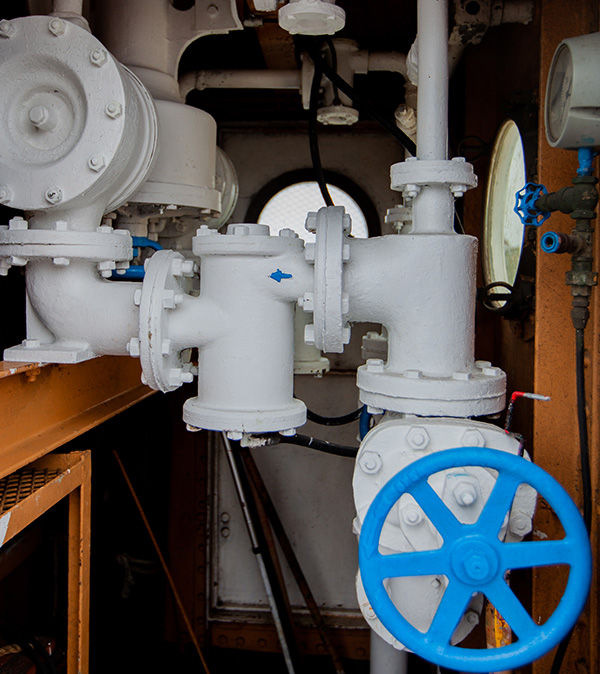
D
The foghorn had audible range of 5 miles. When in use, it would be synchronized with the radio beacon giving a rough indication of distance to the lightship. The air-driven horn was supplied by a four-inch air pipe.
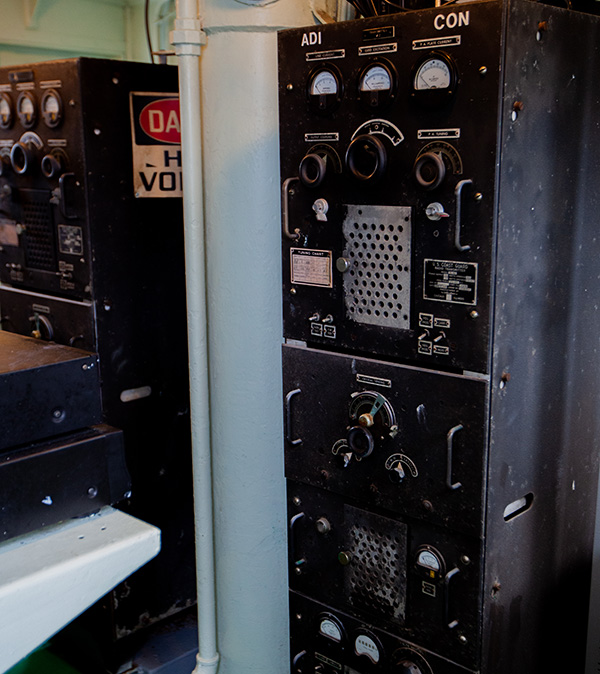
E
These radio transmitters sent out the ship’s Morse code call sign. Ships at sea would home in on that beacon with a radio direction finder to chart a course to the ship.
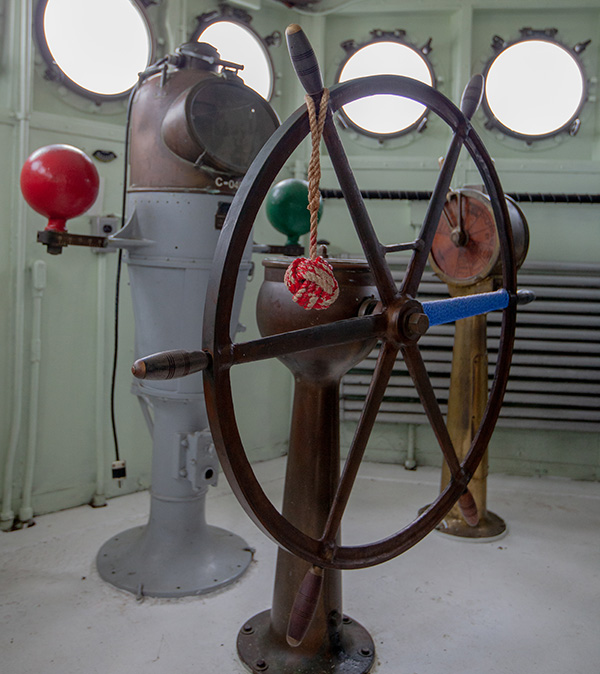
G
Pilot House, with the ship’s wheel and the binnacle to the left and the engine order telegraph to the right.
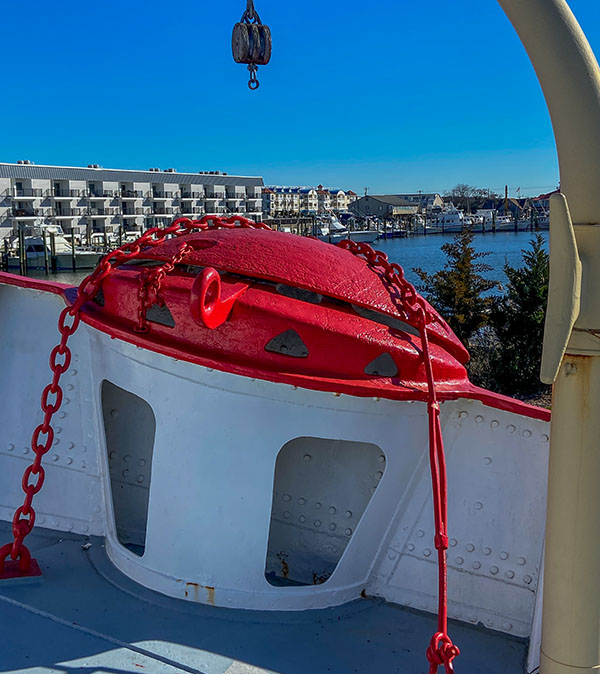
H
This 3000# auxiliary anchor was used with or in place of the main (7000#) anchor. The fish davit visible above was used to lift it into place.

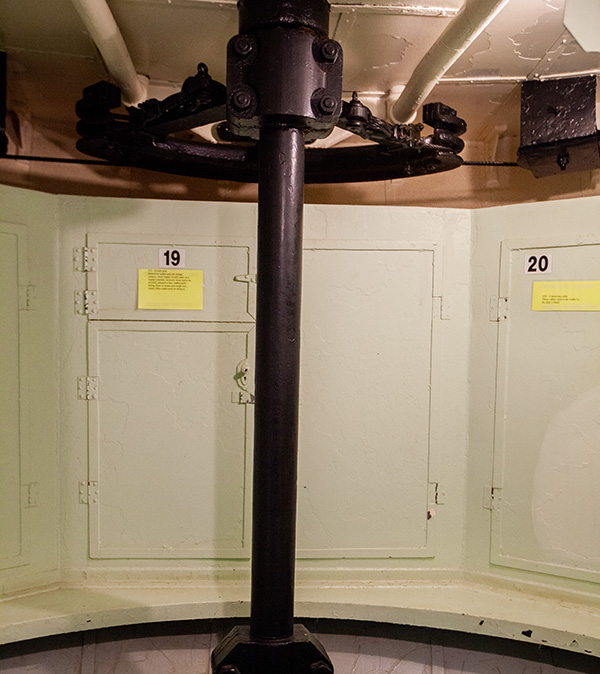
A
The cables coming off each side of the quadrant run all the way to the pilot house.
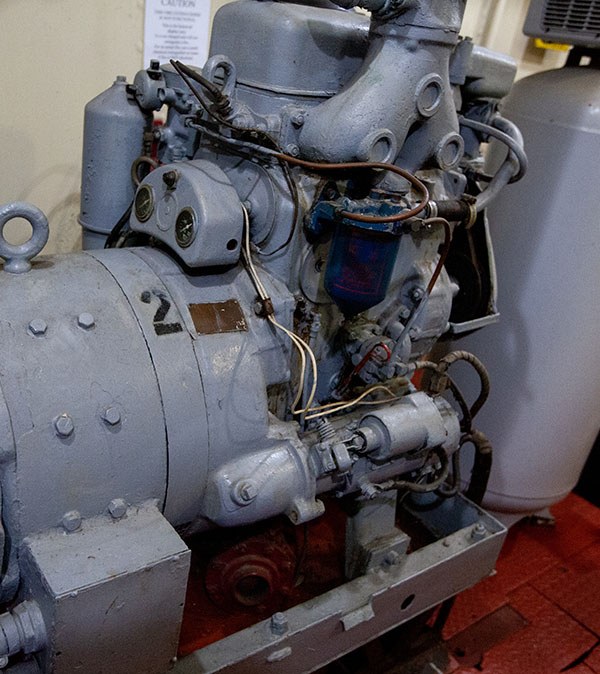
B
At the base of the ladder is a 20kw generator powered by a GM2-71 diesel engine.
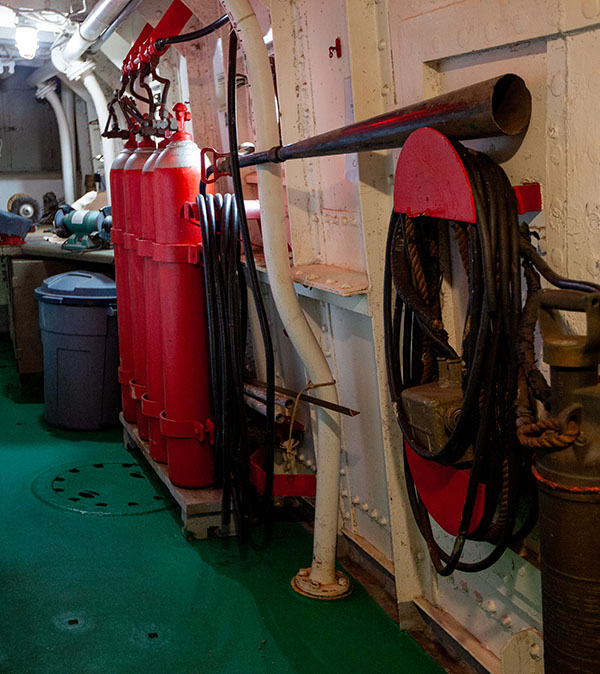
D
Port side passageway, looking aft.
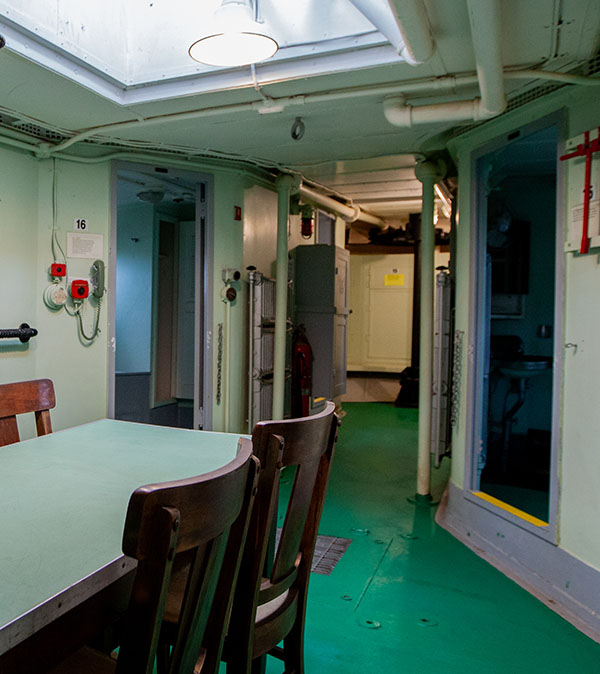
F
Ward room, looking aft.
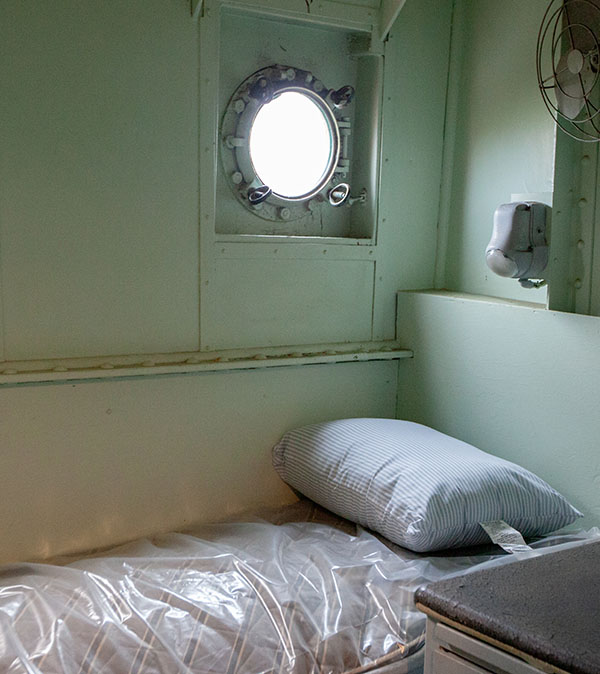
G
Chief Engineer’s cabin.
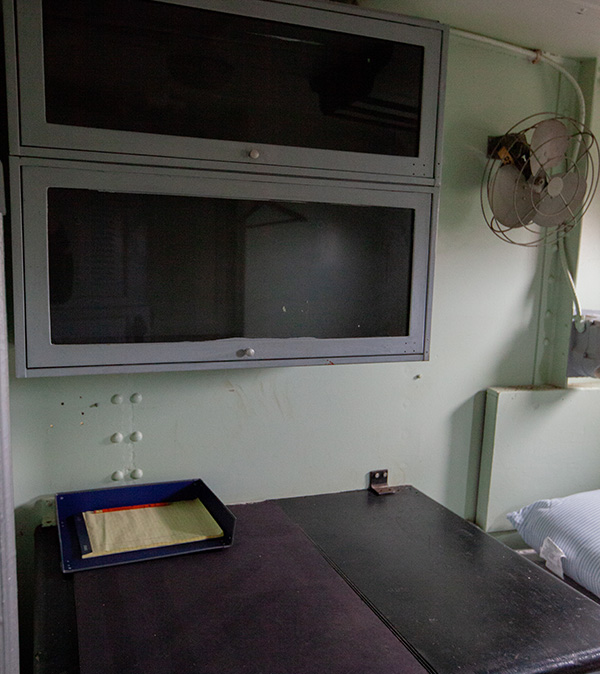
H
The sextant was a gift from Libby Stiff. Her father, a ship’s Captain, used this instrument regularly.
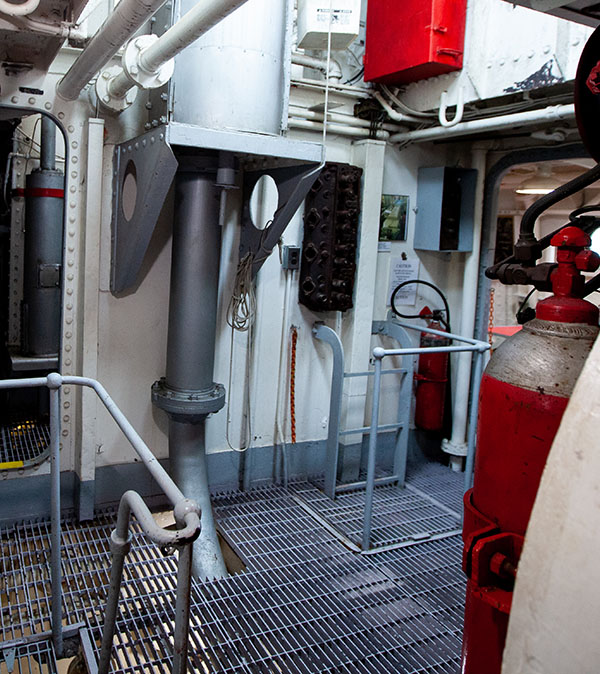
I
Upper engine room, looking forward.
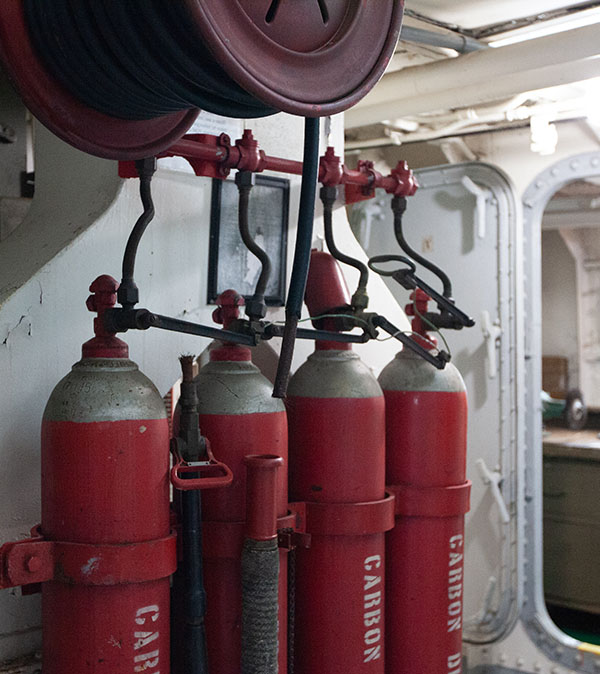
I
These 4 CO2 cylinders were for fire fighting. The hose and cone were dragged to the fire.
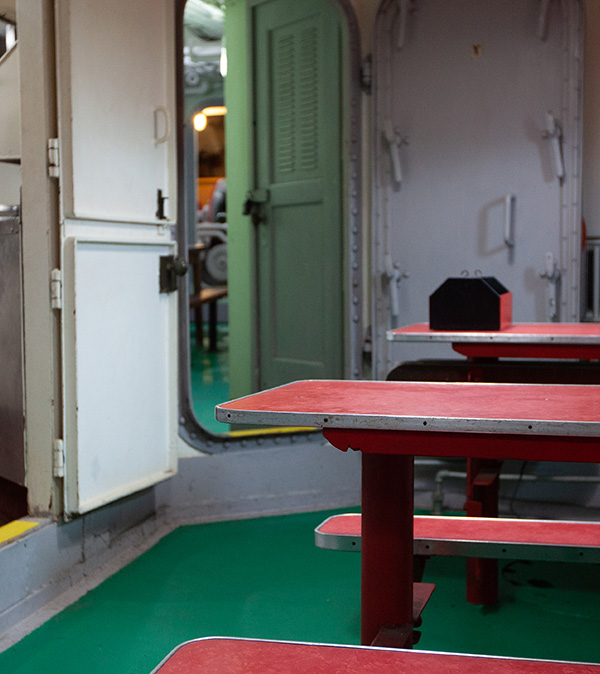
K
Mess decks, looking forward.
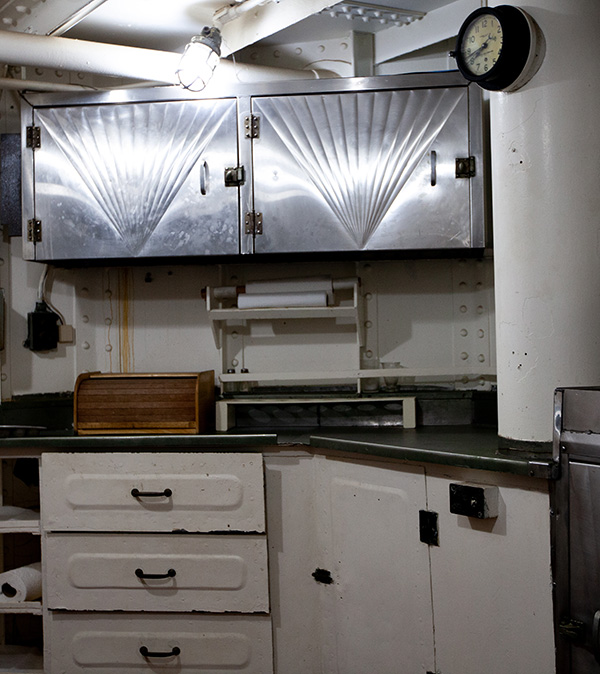
L
The Art Deco design in the cabinet doors was popular in 1938 when the ship was built.
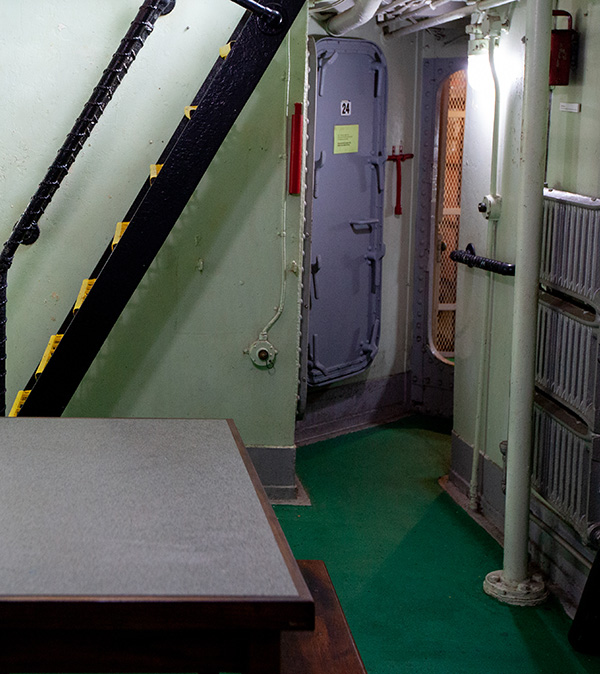
N
Crew’s day room, looking aft with mess decks through the door to the left and the port side passageway to the right.
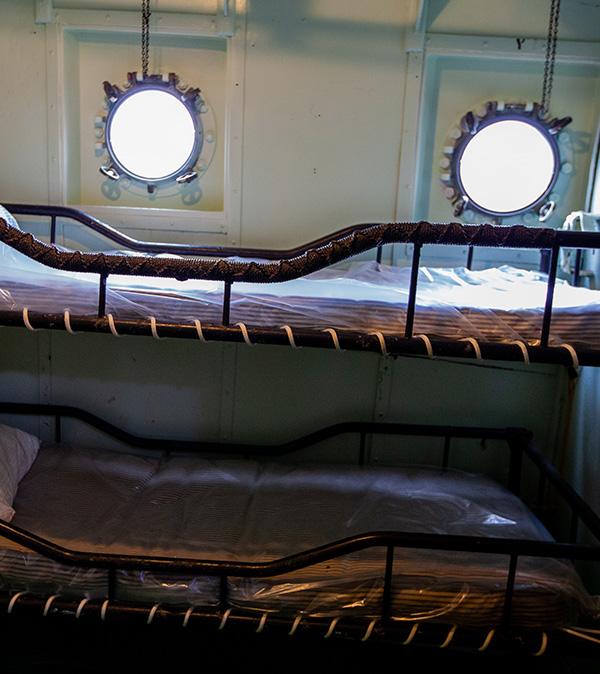
O
Forward crew cabin on the starboard side.
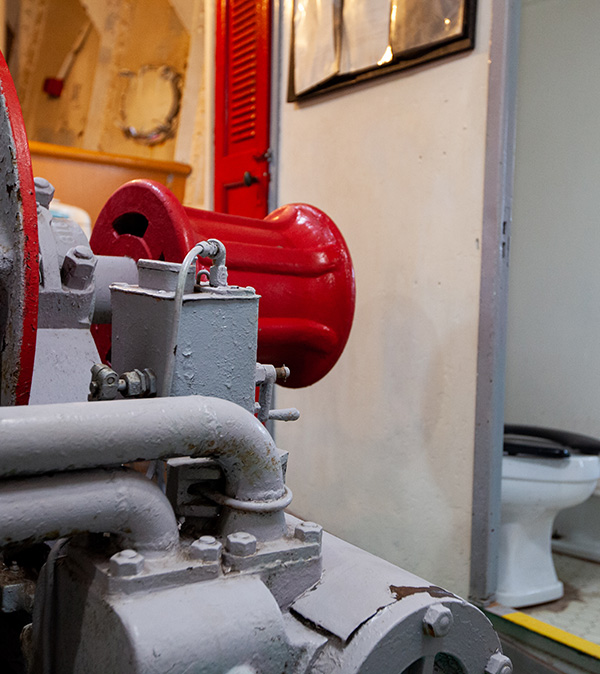
Q
Anchor windlass, with crew’s head to the right.
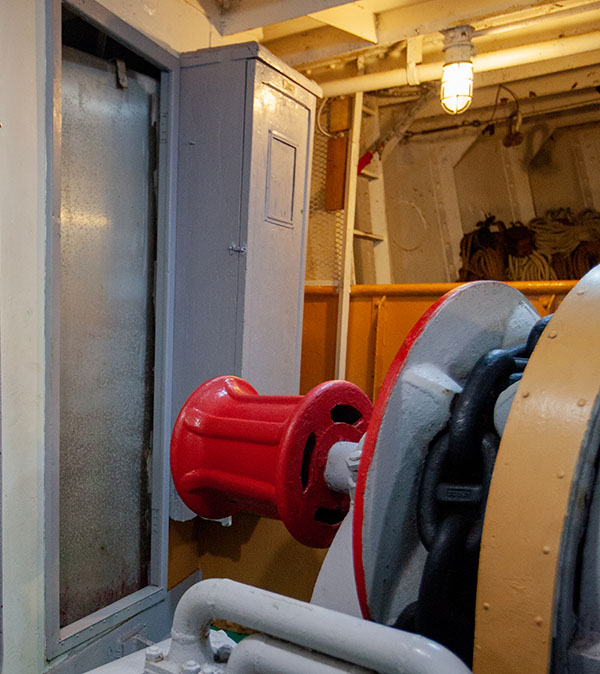
Q
Anchor windlass, freezers beyond.
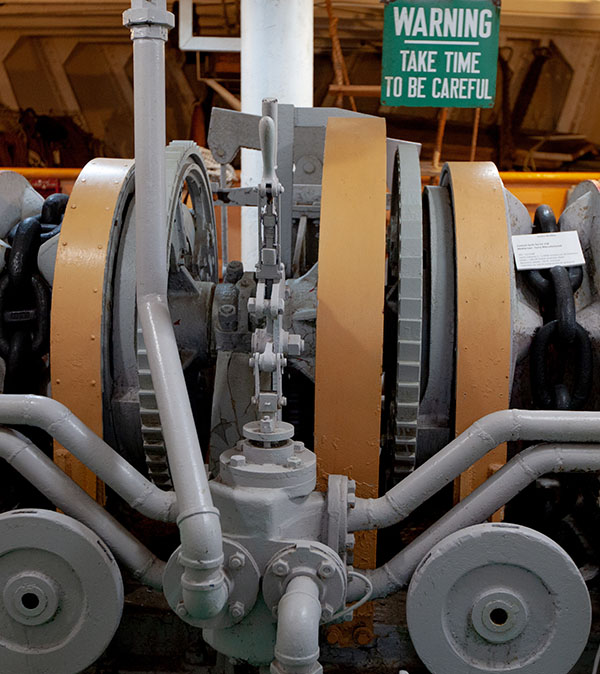
Q
Anchor windlass, powered by compressed air.

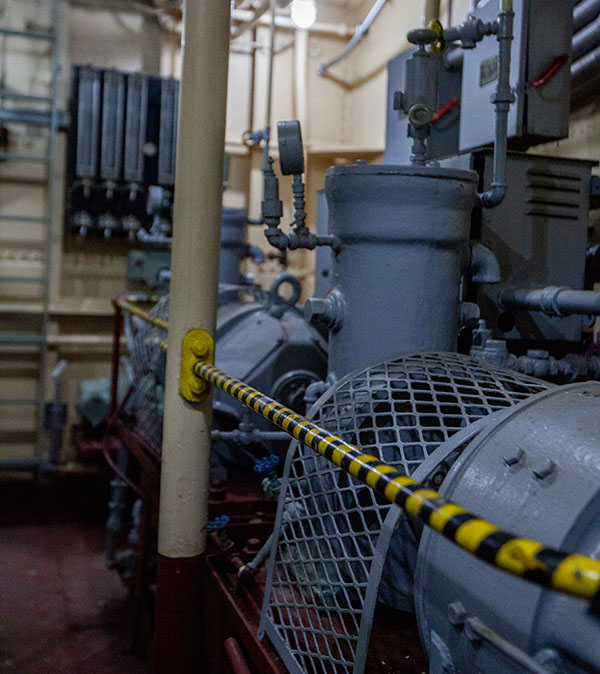
B
Air Compressor: Main engine room, looking forward with electrically powered air compressor for starting engine in the foreground.
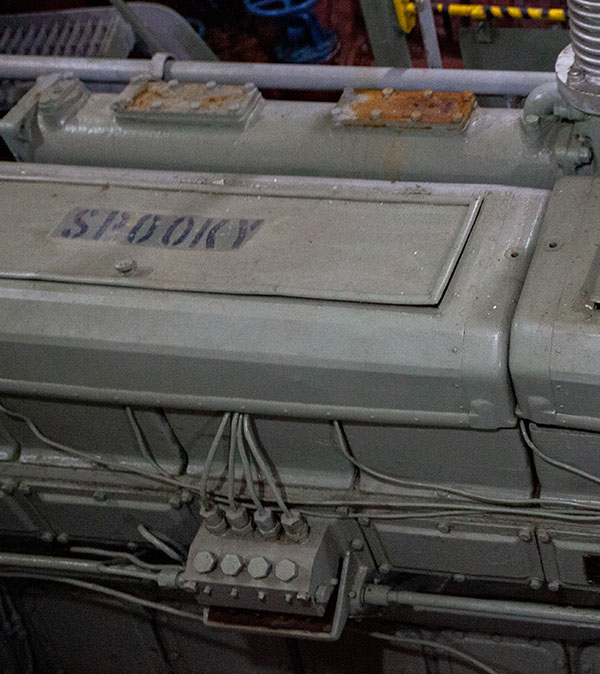
B
Spooky Critter: Main engine room, looking forward. Engine is an eight cylinder, 400HP CooperBessemer diesel named SPOOKY CRITTER by the crew.
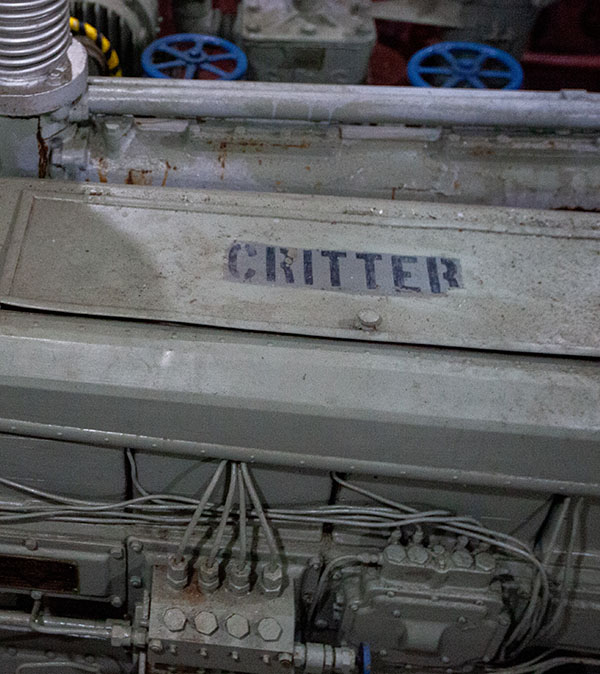
B
Spooky Critter: Main engine room, looking forward. Engine is an eight cylinder, 400HP CooperBessemer diesel named SPOOKY CRITTER by the crew.
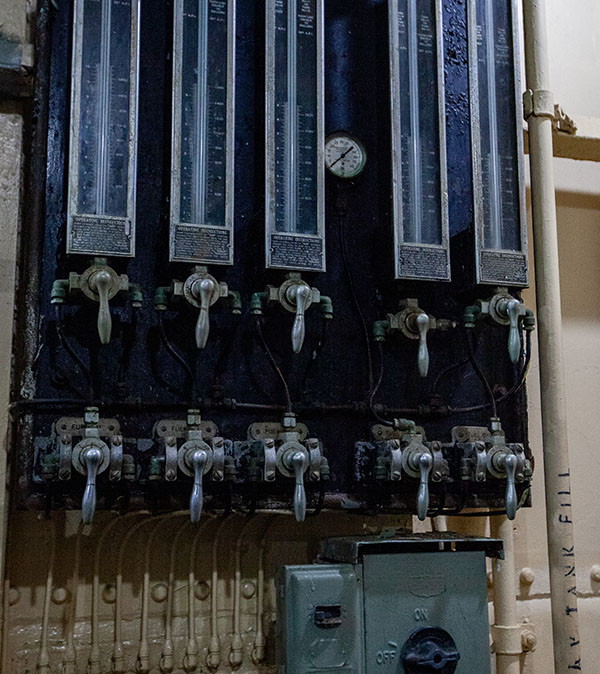
B
Main engine room, fuel gauges, each gauge would either indicate a starboard or a port tank depending on how the lever below it was turned. There are five fuel tanks on each side.

219 Pilottown Road
P.O. Box 413
Lewes, Delaware 19958
Phone: (302) 644-8050
Copyright ©2023 Overfalls Foundation. All Rights reserved.